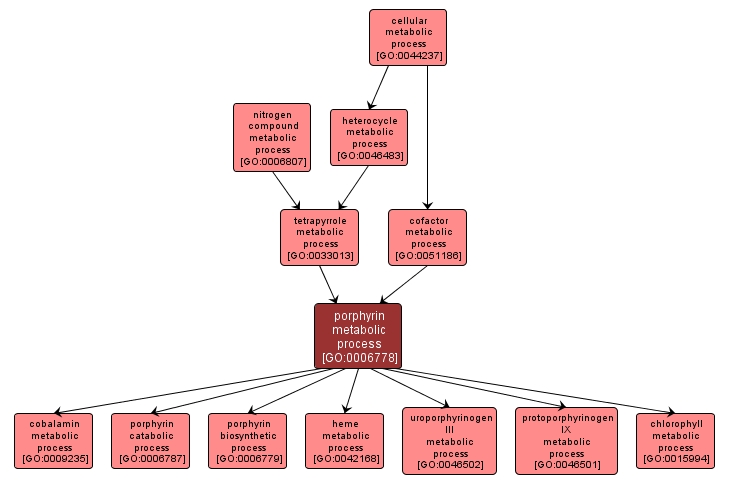GO TERM SUMMARY
|
| Name: |
porphyrin metabolic process |
| Acc: |
GO:0006778 |
| Aspect: |
Biological Process |
| Desc: |
The chemical reactions and pathways involving any member of a large group of derivatives or analogs of porphyrin. Porphyrins consists of a ring of four pyrrole nuclei linked each to the next at their alpha positions through a methine group. |
| Synonyms:
|
|

|
INTERACTIVE GO GRAPH
|














